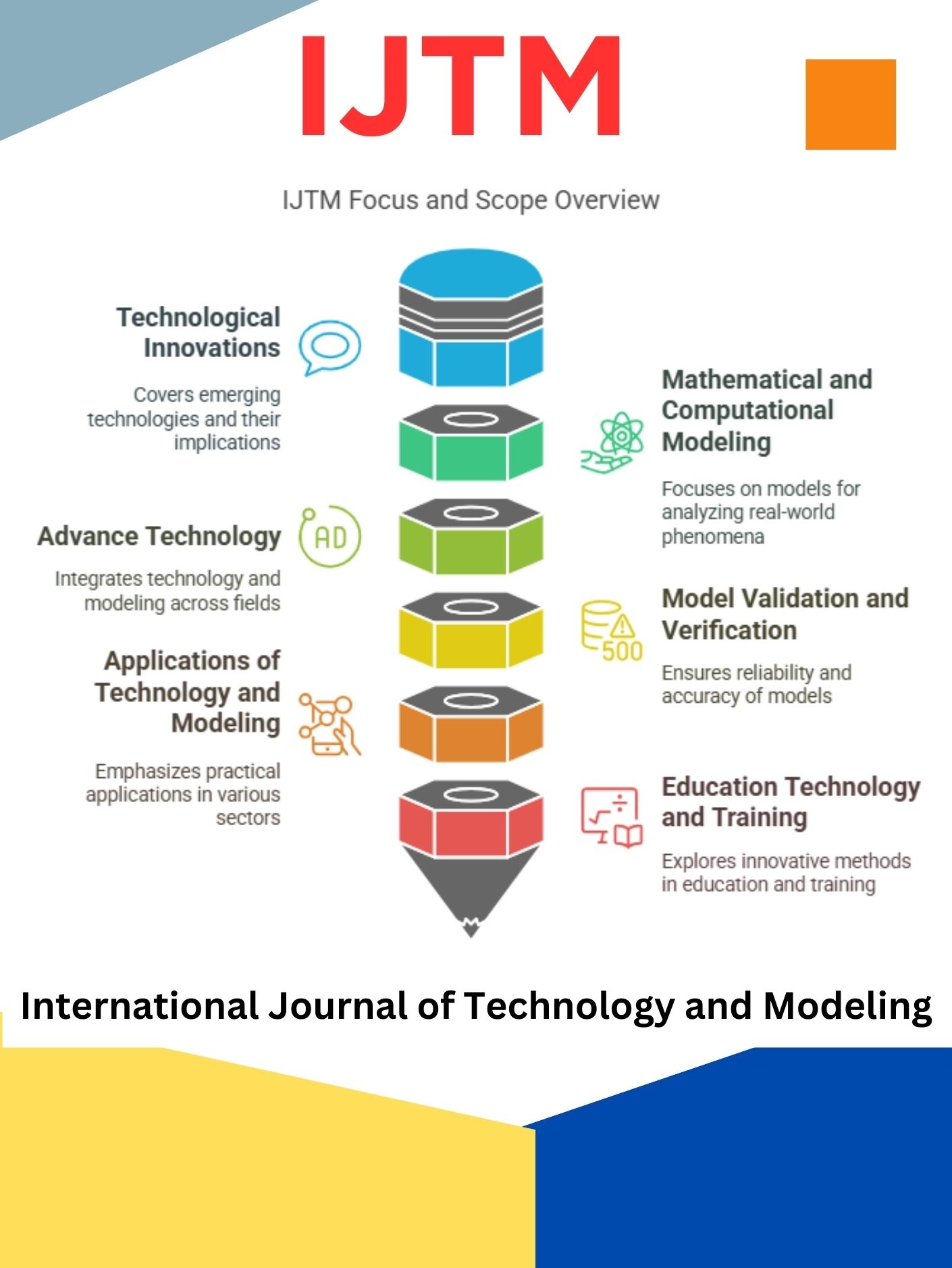A Review Learning Media Development Model
DOI:
https://doi.org/10.63876/ijtm.v1i2.7Keywords:
Learning Media, Development Models, ElearningAbstract
This study aims to review various models of ICT-based learning media development. This study covers several development models such as ADDIE, SAM, RADD, Agile Development Model, Spiral Model, and DADD. The purpose of this research is to evaluate the advantages and disadvantages of each model and provide the best recommendations for the development of effective and efficient learning media. The results of this study are expected to contribute to the development of ICT-based learning media in the future.
Downloads
References
S. Graf, “Adaptivity in Learning Management Systems Focussing on Learning Styles,” Proc. 2009 IEEE/WIC/ACM Int. …, vol. 3, no. December 2007, pp. 235–238, 2009, doi: 10.1109/WI-IAT.2009.271.
M. Yazdi, “E-Learning Sebagai Media Pembelajaran Interaktif Berbasis Teknologi Informasi,” J. Ilm. Foristek, vol. 2, no. 1, pp. 143–152, 2012.
A. Baylari and G. A. Montazer, “Design a personalized e-learning system based on item response theory and artificial neural network approach,” Expert Syst. Appl., vol. 36, no. 4, pp. 8013–8021, 2009, doi: 10.1016/j.eswa.2008.10.080.
R. YIlmaz, “Knowledge sharing behaviors in e-learning community: Exploring the role of academic self-efficacy and sense of community,” Comput. Human Behav., vol. 63, pp. 373–382, 2016, doi: 10.1016/j.chb.2016.05.055.
S. Hilmi Zaki Islahati, Rezza Trie Kusdayati, “Implementasi Bilangan Bulat pada Permainan Tradisional Congklak,” Nurjati J. Math. Math. Sci., vol. 1, no. 2, 2021.
M. A. Hamid, L. Yuliawati, and D. Aribowo, “Feasibility of electromechanical basic work e-module as a new learning media for vocational students,” J. Educ. Learn., vol. 14, no. 2, pp. 199–211, 2020, doi: 10.11591/edulearn.v14i2.15923.
S. Nurul Bahiyah, Wulandari Wulandari, “The Development of Islamic Religious Education Android-Based Application of Salat Material for Elementary Students,” Al-Aulad J. Islam. Prim. Educ., vol. 5, no. 2, pp. 68–78, 2022.
S. Syafril and V. Puspasari, “Development of Digital Information Management Learning Media Based on Adobe Flash in Grade X of Digital Simulation Subject,” J. Phys. Conf. Ser., 2019, doi: 10.1088/1742-6596/1363/1/012066.
L. Witaharahap and E. Surya, “Development of Learning Media in Mathematics for Students with Special Needs,” Int. J. Sci. Provid. by GSSRR.ORG Int. Journals Publ. Res. Pap. all Fields Basic Appl. Res., pp. 1–12, 2017.
N. N. Fatin and Z. Arifin, “The feasibility of an Android-based pocketbook as mathematics learning media in senior high school The feasibility of an Android-based pocketbook as mathematics learning media in senior high school,” J. Phys. Conf. Ser. Pap., 2018.
MonsoonSIM, “Supports Educators Worldwide Through Implementation of the ADDIE Model!” [Online]. Available: https://www.monsoonsim.com/guide.html?stage=NEWS_DETAIL&id=889927.
Kennesaw, “Successive Approximation Model (SAM).” [Online]. Available: https://dli.kennesaw.edu/resources/idmodels/sam.php.
Z. A. . Abd Ghadas, A. , Wan Ismail, W. N., Abd Aziz, M. , Harun, N. A., Jusop, and C. A. and Abd Rahman, “LAFAMS : Account management system for Malaysian small legal firms,” Soc. Sci. Humanit., no. January, 2015.
M. Thakur, “Agile Development Model.” [Online]. Available: https://www.educba.com/agile-development-model/.
T. Target, “Spiral Model.” [Online]. Available: https://www.techtarget.com/searchsoftwarequality/definition/spiral-model.
A. Maydiantoro, “MODEL-MODEL PENELITIAN PENGEMBANGAN (RESEARCH AND DEVELOPMENT),” no. 10, 2019.
S. E Widyastuti, “Using the ADDIE model to develop learning material for actuarial mathematics Using the ADDIE model to develop learning material for actuarial mathematics,” J. Phys. Conf. Ser. Pap., 2019, doi: 10.1088/1742-6596/1188/1/012052.
R. Sharifah and S. Faaizah, “The Development of Online Project Based Collaborative Learning using ADDIE Model,” Procedia - Soc. Behav. Sci., vol. 195, pp. 1803–1812, 2015, doi: 10.1016/j.sbspro.2015.06.392.
C. W. & B. G. Hollier, “Guidelines for Incorporating Active Learning Into the Design of Online Management Courses Utilizing the Successive Approximation Model ( SAM ),” Int. J. Educ. Dev. Using Inf. Commun. Technol., vol. 18, no. 1, pp. 264–274, 2022.
G. S. Mahendra and I. K. A. Asmarajaya, “Konservasi Kidung Sekar Madya dalam Aplikasi Berbasis Android Menggunakan Successive Approximation Model Kidung Sekar Madya Conservation in an Android-Based Application Using the Successive Approximation Model,” Justin J. Sist. dan Teknol. Inf., vol. 10, no. 4, pp. 542–549, 2022, doi: 10.26418/justin.v10i4.56806.
R. Agarwal, J. Prasad, M. Tanniru, and J. Lynch, “Risks of Rapid Application Development,” ACM, pp. 177–188, 2000, doi: 10.1145/352515.352516.
J. R. Sagala, “MODEL RAPID APPLICATION DEVELOPMENT ( RAD ) DALAM PENGEMBANGAN SISTEM INFORMASI PENJADWALAN,” J. mantik Panusa, vol. 2, no. 1, pp. 87–90, 2018.
P. Ciancarini, M. Missiroli, and F. Poggi, An Open Source Environment for an Agile Development Model, vol. 2. Springer International Publishing, 2020.
M. H. J. V. L. Z. M. A. Babar, “Software quality and agile methods,” Proc. 28th Annu. Int. Comput. Softw. Appl. Conf. 2004. COMPSAC 2004., 2004.
B. Boehm, “The Spiral Model as a Tool for Evolutionary Acquisition,” J. Def. Softw. Eng., no. May, 2001.
M. G. G. Zhaohao Sun, “HSM : a hierarchical spiral model for knowledge management,” 2nd Int. Conf. Inf. Manag. Bus., 2006.
F. Darema, “Dynamic Data Driven Applications Systems : A New Paradigm for Application Simulations and Measurements,” Int. Conf. Comput. Sci., pp. 662–669, 2004.
C. M. Atkinson, “Dynamic Model-Based Calibration Optimization : An Introduction and Application Chris Atkinson and Gregory Mott,” SAE Int. Chris, no. April, 2017, doi: 10.4271/2005-01-0026.
A. G. Irawan, N. Padmadewi, and L. P. Artini, “Instructional materials development through 4D model ",” SHS Web Conf., vol. 00086, pp. 1–4, 2018.
S. W. Rahmatsyah and K. Dwiningsih, “Development of Interactive E-Module on The Periodic System Materials as an Online Learning Media,” J. Res. Sci. Educ., vol. 7, no. 2, 2021, doi: 10.29303/jppipa.v7i2.582.



